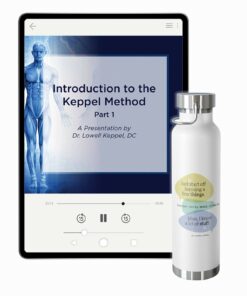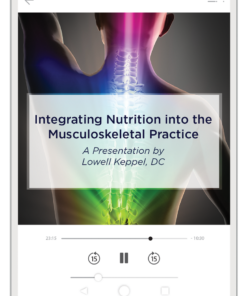Chiropractic doctors! We’re treating patients who are more malnourished, more emotionally and physically stressed out, and more toxic than ever before. In December 2011, the American Academy of Neurological Surgeons calculated that “an estimated 75 to 85 percent of all Americans will experience some form of back pain during their lifetime.”
Staggering statistic, but the real question is why? Why do so many people have back issues, neck pain, and other joint problems? We can all accept that some of this is due to traumatic injuries that cause tissue damage. But what about the people whose injuries seem not to heal?
Muscles, tendons, ligaments, and intervertebral discs hold the bones together. But tissues require the proper nutritional building blocks to perform this essential function. Scurvy is a condition where the body loses its connective tissue strength due to a lack of the whole vitamin C complex. Today we see many people with subclinical scurvy in the form of easy bruising, issues with vertebral discs, and other joint laxity problems. Dr. W.J. McCormick wrote that disc issues were a result of a subclinical scurvy (deficiency of vitamin C complex) in a remarkable article written back in 1954. According to Dr. McCormick:
The most definitely established physiological function of vitamin C is that of assisting in the formation of collagen for the maintenance of stability and elasticity of connective tissues generally, and this would include the bones, cartilages, muscles, and vascular tissues—in fact, all tissues of mesenchymal origin. In deficiency of the vitamin, instability and fragility of all such tissues is believed to be caused by the breakdown of “the intercellular cement substance” (collagen), resulting in easy rupture of any and all of these connective tissues, which would include the intervertebral discs.
You can read the full article at the Selene River Press Historical Archives.
The prudent doctor—especially the chiropractor—owes it to his patients to evaluate their need for whole food vitamin C, such as Cataplex C from Standard Process. This supplement provides nutrients the body needs to build collagen and strengthen the ligaments, tendons, and muscles.
Just as important as vitamin C are minerals, especially manganese, for soft tissue health. Manganese gives strength to the tissues and allows the muscles, tendons, and ligaments, including intervertebral discs, to maintain flexibility. In “A Presentation of a New Approach to Correction of Disc Lesions,” a 1954 article published in the Journal of the National Chiropractic Association, Dr. George Goodheart notes that using Trace Minerals-B12 in cases of chronic ligament laxity results in greatly improved manipulation alone. He states, “But with the addition of manganese therapy and the previously mentioned routine, we have practically doubled our average recovery rate.” Dr. Goodheart goes on to say: “The addition of manganese is not a cure-all—the patients still require the most precise adjustment and management—but they do avoid surgery; they do stay adjusted better and longer; they do achieve pain relief; and they do refer patients. The trace mineral compound we used did contain B12 as a source of cobalt.”
In my own practice, I’ve found that incorporating whole food nutrition such as Standard Process’s Trace Minerals-B12, Ligaplex I and Ligaplex II, Manganese B12, and Cataplex C helps my patients achieve the ultimate purpose of a chiropractic adjustment by restoring function of the joint articulations, improving nerve flow to the body faster, and maintaining the corrections longer.
We owe it to our patients to get them results as fast as possible. Remember that every case you see has a nutritional component!
Photo from iStock/lisafx






I have been wanting to get a massage for quite some time. Well, really what I want is to get rid of my back pain. When I was in high school, I worked at a feed lot. Picking up bags every day was probably not good for my lower back. http://www.tinleychiro.com/Chiropractic/